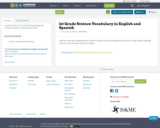
1st grade science key vocabulary English/Spanish translations (space to add drawing as well).
- Material Type:
- Lesson Plan
- Date Added:
- 06/01/2012

1st grade science key vocabulary English/Spanish translations (space to add drawing as well).

This lesson will help students understand how a shadow is created and allow them to experiment with creating shadows.

Objective: In this lesson students will apply knowledge of classroom rules and safety; determining appropriate behaviors. Gaining this skill will allow students to recognize the importance of following directions, safety rules, and how to treat their peers. In turn, students will be able to adapt to these skills and use them within the classroom setting. improving their social and academic performance. Many students lack the ability to have self-control at this age, so during the lesson we will integrate ways of developing self-control through role-play activities. The activities will be both a fun, engaging, and realistic approach to developing self-control skills.
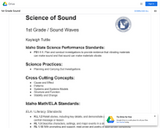
A first grade unit on sound waves.

This is complete workout for the first day of practice at Modesto Junior College.It gives the sets and the total yards for the workout.

Midterm examination for a class at MIT covering game theory and its applications to economics. The one-hour-and-twenty-minute open book examination asks open ended theoretical questions. The exam contains questions and solutions.

In which John introduces you to quite a lot of Chinese history by discussing the complicated relationship between the Confucian scholars who wrote Chinese history and the emperors (and empress) who made it. Included is a brief introduction to all the dynasties in Chinese history and an introduction to Confucius and the Confucian emphasis on filial piety, the role the mandate of heaven played in organizing China, and how China became the first modern state.
Chapters:
Introduction: China
Dynasties of China
The Mandate of Heaven
The Qin Dynasty
Confucius and Confucianism
An Open letter to the Xia Dynasty
Ren and Li
The Problem with Early Written Chinese History
Credits
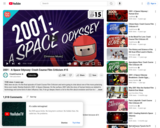
Well, here we are. It's the final episode of Crash Course Film Criticism and we're going to chat about one of the more polarizing films ever made: Stanley Kubrick's 2001: A Space Odyssey. On the surface, 2001 tells the story of human history as related to technology and some kind of alien influence. But, if we go deeper, there's a lot to this film about evolution and how technology might spell our end... or at least our change. Join Michael Aranda one more time for this great Science Fiction masterpiece.
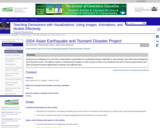
This is a problem-based learning (PBL) group jigsaw activity. The scenario is:
Students are employees of a unit of the United Nations responsible for coordinating disaster relief after a major disaster (the 2004 Asian Earthquake and Tsunami) occurs. The agency needs to understand the situation in each country so that it can coordinate the work of various governments and nongovernmental organizations (NGOs) working in the affected area.
Students are divided into Expert Groups (related to academic specialties such as Economics, Medicine, Political Science, Earth Science, etc.) and spend several days researching their topics. Students are then reassigned to one of seven or eight Country Groups, based on the countries most affected by the disaster. Each country group needs someone representing each expert group. In the scenario, these groups correspond to task forces that must determine what the situation is in each country and try to assess the current need for international assistance.
Students research their country, using internet resources, especially the CIA World Factbook and ReliefWeb, the information coordination website of the United Nations. At a large-group roundtable discussion, each group presents what it has found about its assigned country. As a final product, each student writes an individual report summarizing findings and making recommendations for disaster assistance.
(Note: this resource was added to OER Commons as part of a batch upload of over 2,200 records. If you notice an issue with the quality of the metadata, please let us know by using the 'report' button and we will flag it for consideration.)
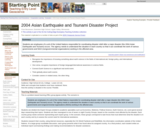
Students are employees of a unit of the United Nations responsible for coordinating disaster relief after a major disaster (the 2004 Asian Earthquake and Tsunami) occurs. The agency needs to understand the situation in each country so that it can coordinate the work of various governments and NGO (nongovernmental organizations) working in the affected area.
(Note: this resource was added to OER Commons as part of a batch upload of over 2,200 records. If you notice an issue with the quality of the metadata, please let us know by using the 'report' button and we will flag it for consideration.)
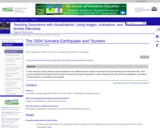
In this multi-part activity, students study seismograms from 3 different seismic stations recording the magnitude 9.0 Sumatra earthquake of December 26th, 2004. By comparing the arrival times of the P and S waves on each seismogram, students determine the distance from the epicenter to each station. Using that data, they can accurately map the location of the epicenter and the precise time of the earthquake. After locating the epicenter, students calculate the position of the tsunami generated by the quake at one hour intervals. From those determinations, predictions are made about how much time people had before the tsunami crashed onto their shores. Finally, students investigate some of the ways people can lessen the impact of the next great tsunami.
(Note: this resource was added to OER Commons as part of a batch upload of over 2,200 records. If you notice an issue with the quality of the metadata, please let us know by using the 'report' button and we will flag it for consideration.)
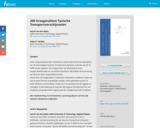
Deze vraagstukkenbundel is bedoeld als oefenmateriaal bij het bestuderen van de basiscolleges Fysische Transportverschijnselen, zoals die aan de TU Delft worden gegeven. De vraagstukken zijn afkomstig uit oude vraagstukkenbundels en uit recente tentamens. Wij hebben de formulering van veel van deze vraagstukken herzien.
Vooral door de vraagstukken in meerdere onderdelen te splitsen, hopen we aan te geven dat een stapsgewijze aanpak, veelal gebaseerd op één of meer balansen, een bruikbaar recept voor het oplossen van de opgaven is. Overigens is deze splitsing bij lang niet alle opgaven doorgevoerd om aan studenten de gelegenheid te geven juist dit moeilijke facet zelf te oefenen.
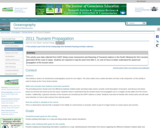
This activity uses data collected from DART (Deep-ocean Assessment and Reporting of Tsunamis) stations in the Pacific following the 2011 tsunami generated off the coast of Japan. Students are required to map the wave front after 5, 10, and 15 hours to better understand the speed and propagation of the tsunami wave.
(Note: this resource was added to OER Commons as part of a batch upload of over 2,200 records. If you notice an issue with the quality of the metadata, please let us know by using the 'report' button and we will flag it for consideration.)
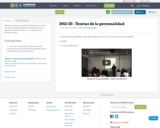
Material de apoyo y materiales utilizados en el curso «Teorías de la personalidad» a desarrollarse en el semestre académico 2012 - III, a cargo de Víctor MIranda Vargas.
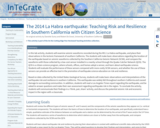
This exercise uses the example of the March 28, 2014 M5.1 La Habra earthquake to teach about earthquake risk and resilience in southern California. Students will examine seismic waveforms recording during the earthquake, as well as read reports from scientific agencies and news outlets to answer basic questions regarding earthquake risk and resilience.
(Note: this resource was added to OER Commons as part of a batch upload of over 2,200 records. If you notice an issue with the quality of the metadata, please let us know by using the 'report' button and we will flag it for consideration.)
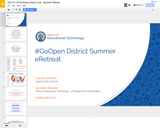
Open Educational Resources presentation
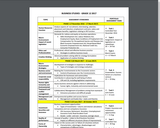
an annual guide with forms of assessment

This resource is a video abstract of a research paper created by Research Square on behalf of its authors. It provides a synopsis that's easy to understand, and can be used to introduce the topics it covers to students, researchers, and the general public. The video's transcript is also provided in full, with a portion provided below for preview:
"Since 1991, the international Banff Classification has been revisited every 2 years to integrate advances in clinical research into best-treatment practices for organ transplantation. At the 2017 Banff conference, 479 delegates from 23 countries reviewed two seminal concerns in the kidney-transplant field: how T cell-mediated rejection is related to inflammation in areas of interstitial fibrosis and tubular atrophy, and the evolution of molecular diagnostics, particularly for identifying antibody-mediated rejection. These discussions prompted significant updates to the Banff scheme. The relationship between i-IFTA severity and graft survival has been well established. Despite this, i-IFTA has previously been excluded as a diagnostic criterion of TCMR. Recent findings, however, suggest that inflammation in IFTA can be a manifestation of chronic active TCMR, particularly when other features of T cell-mediated alloimmunity, such as tubulitis, are present..."
The rest of the transcript, along with a link to the research itself, is available on the resource itself.

Short Description:
The textbook provides an important opportunity for students to learn the core concepts of chemistry and understand how those concepts apply to their lives and the world around them. The book also includes a number of innovative features, including interactive exercises and real-world applications, designed to enhance student learning.
Word Count: 113253
Included H5P activities: 42
(Note: This resource's metadata has been created automatically by reformatting and/or combining the information that the author initially provided as part of a bulk import process.)

MOSAIC selects, reviews, and promotes books that authentically and realistically portray the diversity of all students, from both historical and contemporary perspectives.
Every resource is reviewed by ESU 18 committee members for accuracy, authenticity, content and perspective, characterization, setting, and literary quality. Only the "best of the best" resources are included in the annual MOSAIC collection.